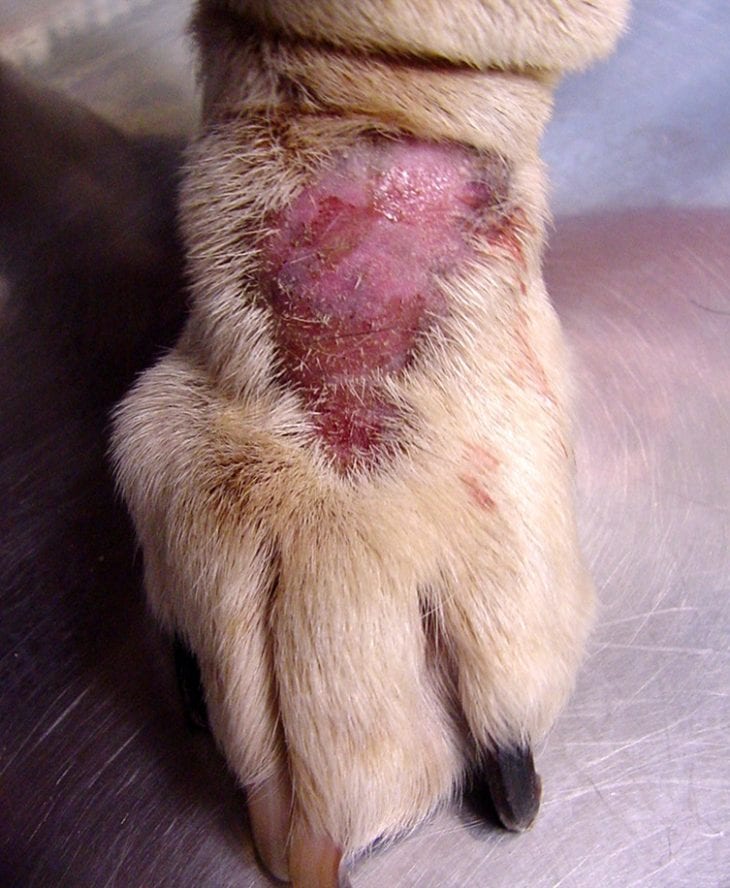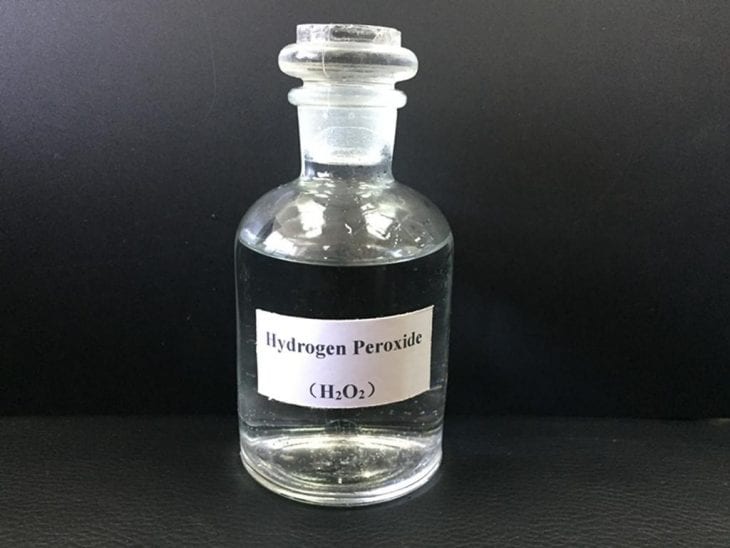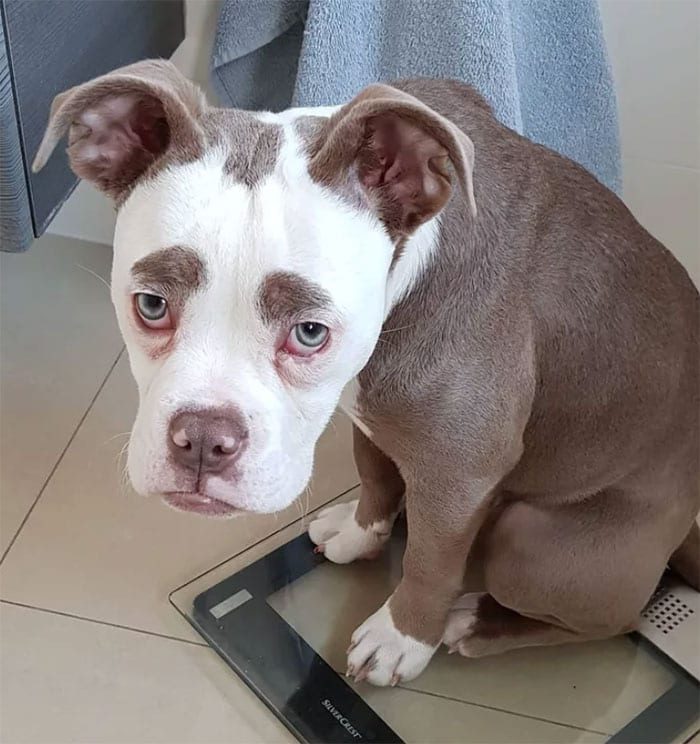Before I delve into how exactly hydrogen peroxide cures dogs of their hot spots, it’s important to first lay the groundwork for what causes hot spots in dogs, so everyone fully understands how this cure works.
Contents
What Are Dog Hot Spots?
Hot spots are a skin condition that affects dogs due to excessive heat and moisture resulting in slightly raised inflamed red bumps. These bumps can be incredibly irritating to their sensitive skins causing them to scratch at the spots until they bleed resulting in even greater discomfort as well as the risk of the sores becoming infected. A dog hot spot infection like the one shown on the Banixx website is caused by bacteria and pus that has an unpleasant odor and may accompany the condition.

Img source: stuff4petz.com
Due to the fact that heat and moisture aggravate this type of dermatitis, it is more common in certain areas and climatic conditions and is far more likely to occur in the summer months. It may also be more common in some species of dog but can occur on the skin of just about any breed. Fleas, ticks, flies and other insects bites can also aggravate or cause hot spots. A dirty or matted coat may also contribute as can skin allergies.
There is a wide range of treatments available, some of which are far more effective than others. One of the most effective, quick fixes for the condition is peroxide.
How To Use Hydrogen Peroxide To Treat Hot Spots
Hydrogen peroxide is an antiseptic which means that it kills bacteria to eliminate infections and to help heal wounds faster. It also acts to dry out a wound which makes it an ideal solution to treat hot spots on dogs. However, this is a chemical, and it is important to take care when using the solution on the skin. In high concentrations, it can burn the skin, and the nose of a dog may be particularly sensitive to the harsh chemical odor.
Along with treating skin disorders, you can use hydrogen peroxide to make a dog throw up if they ingest some harmful substance.

Img source: sjzxlwhg.com
Steps to treating hot spots with peroxide include:
Step 1 – Cut The Coat
It is recommended to cut away the hair surrounding the hot spot, especially if the dog has a long coat or the hair is matted. This will give you better access to the wound.
Step 2 – Preparing The Solution
It is advisable to buy a 3% concentration of hydrogen peroxide and then further dilute this in water at a 50:50 ratio. In other words, half water and half peroxide. Do not simply follow the instructions on the bottle as these are normally for human wound care and not animals. Further dilution is normally recommended for treatment of hot spots.
Source: Pain in Dogs
Step 3 – Cleaning The Surface Of The Wound
Soak a gauze pad in the peroxide solution and then gently wipe away the pus and other dirt and grime from the surface of the wound. Don’t use a cotton ball as fibers may get caught in the wound. The peroxide may sting, and it may be necessary to get some assistance holding the dog still during this process. Be sure to clean all wounds to effectively eliminate the bacterial infection and prevent it from spreading further.
Step 4 – Irrigating The Wound
An infected hot spot will have bacteria and pus that runs deep into the wound and need to be effectively flushed out in order to achieve the best results. Suction some of the peroxide into a small syringe (without a needle) and place in the wound opening. Press the plunger down firmly to release a stream of the solution into the wound. Once again, this can be painful, and help may be necessary to hold the dog still.

Step 5 – Drying The Wound
Gently pat the wound to remove excess moisture with a gauze pad. The wound should not be left soaking wet but at the same time does not need to be dried entirely as the peroxide will still work to kill bacteria and dry out the sore long after it has been cleaned.
Step 6 – A Collar
An Elizabethan collar can be placed on your dog to prevent him from licking or scratching the hot spots and reinfecting them. The wounds should scab over nicely within a couple of days of treatment, but it is recommended to keep a collar on for longer than this.
It is recommended to repeat this process at least once a day but preferably twice a day for the best results. If the wounds are not healing after a couple of days, make an appointment with your vet as soon as possible.
